Many argue that the age of chemistry in European crop production is coming to an end. Whether true or not, how we produce crops has changed over the past decade and more change is inevitable.
This has given rise to a new way of thinking on crop production, which uses an integrated approach combining improved soil management with an increased focus on crop nutrition to help reduce dependence on pesticides.
This has also given way to a new breed of agronomists. Sam Deane is a prime example.
Sam advocates a nutrition-based crop production system
The Cork man, who has a masters degree in integrated pest management, returned from an agronomy role in Britain to take up a position as Irish manager for New Generation Agriculture, a company specialising in crop nutrition and biostimulant products.
Sam advocates a nutrition-based crop production system, aiming to drastically reduce the use of pesticides and chemical fertiliser while increasing crop margins. The theory is simple – feed the crop with what it needs in order to build more resilient plants.
This system of crop production is still evolving and we cannot offer blanket recommendations like conventional production methods, Sam remarks.
But if a farmer wants to try something a little different and is prepared to take a risk, then a programme like this could be worth a try.
A changing system
“You need three elements for disease – a host, a pathogen and an environment,” explains Sam. By regularly feeding the crop what it needs, the objective is to produce healthier plants (host), capable of withstanding more environmental pressures, including pathogens.
This means understanding the crop’s nutritional requirements at a macro and micro level. Sam regularly sends leaf samples for analysis during the season. He also uses a Horiba Sap meter to take instant pH readings of the plant’s sap.
Sam stressed that this system is only possible where crops are grown in healthy soils
These readings help tailor his nutritional advice, and the products are applied in liquid form to growing crops. In turn, growers reduce or eliminate pesticide use, particularly fungicides and insecticides, depending on the pressure of the year.
However, Sam stressed that this system is only possible where crops are grown in healthy soils.
His programme follows a relatively conventional fungicide model in terms of timings. As each key leaf emerges, he tries to feed it. The key trace elements he focuses on are silica, boron, calcium, magnesium and molybdenum, as well as fulvic acids. These are on top of the crop’s NPK requirements.
Farm trials
His first Irish farm-based trial was completed this year. This was a relatively low-disease-pressure year, Sam acknowledged, so he has yet to see how this programme would perform in a high-pressure season. Farmers should still have the chemical option available to them if needed, he says.
One of his first trials was on the farm of Kildare farmer Tom Tierney, who is converting to a zero-tillage system. Soils have been well minded with the help of cover crops, minimum tillage, rotations and mushroom compost.
Tom wanted to experiment with lower-cost systems to reduce the financial risk of crop production, while maintaining yield levels.

The Heranda spring wheat was sown at 172kg/ha.
In late March he sowed Heranda spring wheat at 172kg/ha using a Duncan drill, into a disced cover crop in good conditions and rolled after.
The crop received no fungicide, insecticide or growth regulator. Along with 170kg N/ha, the crop received four applications of foliar nutrient and biostimulant sprays. At GS32, the crop received Trio (1.0 l/ha) and Dia Life (1.0 l/ha) as well as a home brewed lactobacillus solution.
At GS39 the crop received 150 g/ha of Tri-Kelp, Trio (1.0 l/ha) and Dia Life (1.0l/ha) and lactobacillus. At GS62 the crop received Triple Ten (1.0 l/ha) and Dia Life (1.0 l/ha).
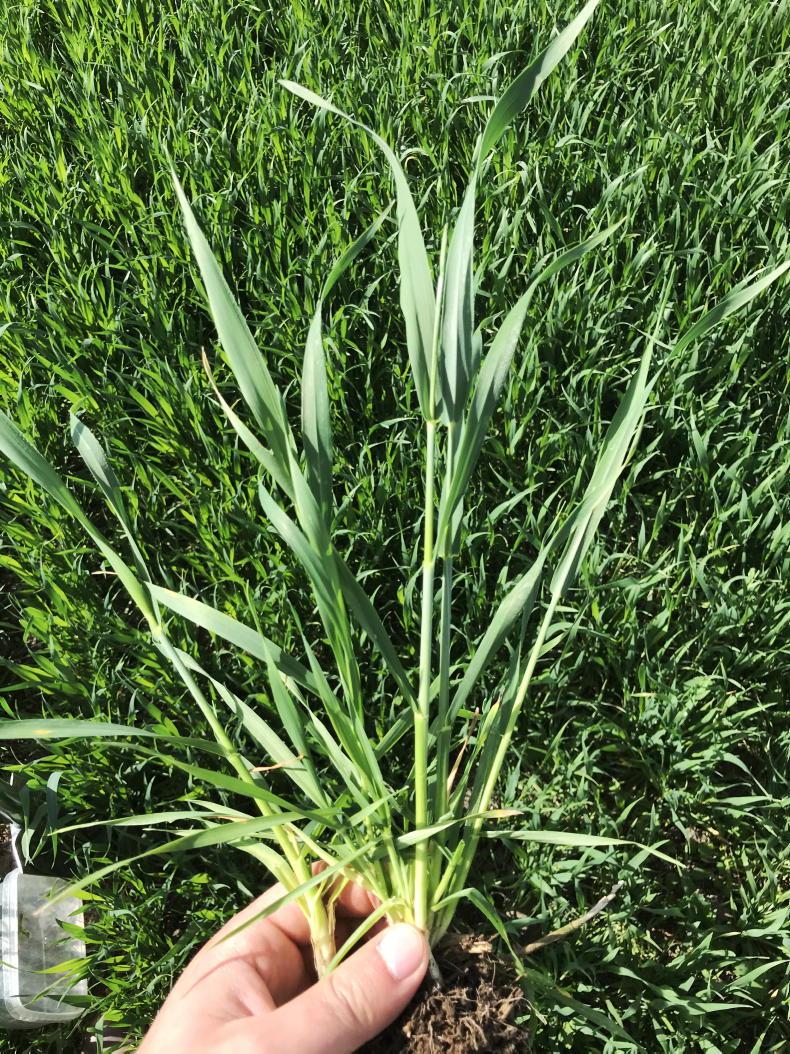
The crop yielded 2.73t/ac.
Sam walked the crop on a weekly basis and said there was some mildew and rust present during the season. This was to be expected and the level of disease remained stable throughout the season. The total cost of the nutritional products was €42.36/ha.
The crop yielded 2.73t/ac at 21% moisture and 77 KPH. No plant growth regulator was applied but the crop was treated with applications of silica. While the crop was taller than where a PGR treatment was used, it withstood August’s storms with minimal lodging. The crop produced eight 4x4 round bales/ac.
Tom was pleased with the performance and he intends to grow more crops using this system next season.
Many argue that the age of chemistry in European crop production is coming to an end. Whether true or not, how we produce crops has changed over the past decade and more change is inevitable.
This has given rise to a new way of thinking on crop production, which uses an integrated approach combining improved soil management with an increased focus on crop nutrition to help reduce dependence on pesticides.
This has also given way to a new breed of agronomists. Sam Deane is a prime example.
Sam advocates a nutrition-based crop production system
The Cork man, who has a masters degree in integrated pest management, returned from an agronomy role in Britain to take up a position as Irish manager for New Generation Agriculture, a company specialising in crop nutrition and biostimulant products.
Sam advocates a nutrition-based crop production system, aiming to drastically reduce the use of pesticides and chemical fertiliser while increasing crop margins. The theory is simple – feed the crop with what it needs in order to build more resilient plants.
This system of crop production is still evolving and we cannot offer blanket recommendations like conventional production methods, Sam remarks.
But if a farmer wants to try something a little different and is prepared to take a risk, then a programme like this could be worth a try.
A changing system
“You need three elements for disease – a host, a pathogen and an environment,” explains Sam. By regularly feeding the crop what it needs, the objective is to produce healthier plants (host), capable of withstanding more environmental pressures, including pathogens.
This means understanding the crop’s nutritional requirements at a macro and micro level. Sam regularly sends leaf samples for analysis during the season. He also uses a Horiba Sap meter to take instant pH readings of the plant’s sap.
Sam stressed that this system is only possible where crops are grown in healthy soils
These readings help tailor his nutritional advice, and the products are applied in liquid form to growing crops. In turn, growers reduce or eliminate pesticide use, particularly fungicides and insecticides, depending on the pressure of the year.
However, Sam stressed that this system is only possible where crops are grown in healthy soils.
His programme follows a relatively conventional fungicide model in terms of timings. As each key leaf emerges, he tries to feed it. The key trace elements he focuses on are silica, boron, calcium, magnesium and molybdenum, as well as fulvic acids. These are on top of the crop’s NPK requirements.
Farm trials
His first Irish farm-based trial was completed this year. This was a relatively low-disease-pressure year, Sam acknowledged, so he has yet to see how this programme would perform in a high-pressure season. Farmers should still have the chemical option available to them if needed, he says.
One of his first trials was on the farm of Kildare farmer Tom Tierney, who is converting to a zero-tillage system. Soils have been well minded with the help of cover crops, minimum tillage, rotations and mushroom compost.
Tom wanted to experiment with lower-cost systems to reduce the financial risk of crop production, while maintaining yield levels.

The Heranda spring wheat was sown at 172kg/ha.
In late March he sowed Heranda spring wheat at 172kg/ha using a Duncan drill, into a disced cover crop in good conditions and rolled after.
The crop received no fungicide, insecticide or growth regulator. Along with 170kg N/ha, the crop received four applications of foliar nutrient and biostimulant sprays. At GS32, the crop received Trio (1.0 l/ha) and Dia Life (1.0 l/ha) as well as a home brewed lactobacillus solution.
At GS39 the crop received 150 g/ha of Tri-Kelp, Trio (1.0 l/ha) and Dia Life (1.0l/ha) and lactobacillus. At GS62 the crop received Triple Ten (1.0 l/ha) and Dia Life (1.0 l/ha).

The crop yielded 2.73t/ac.
Sam walked the crop on a weekly basis and said there was some mildew and rust present during the season. This was to be expected and the level of disease remained stable throughout the season. The total cost of the nutritional products was €42.36/ha.
The crop yielded 2.73t/ac at 21% moisture and 77 KPH. No plant growth regulator was applied but the crop was treated with applications of silica. While the crop was taller than where a PGR treatment was used, it withstood August’s storms with minimal lodging. The crop produced eight 4x4 round bales/ac.
Tom was pleased with the performance and he intends to grow more crops using this system next season.






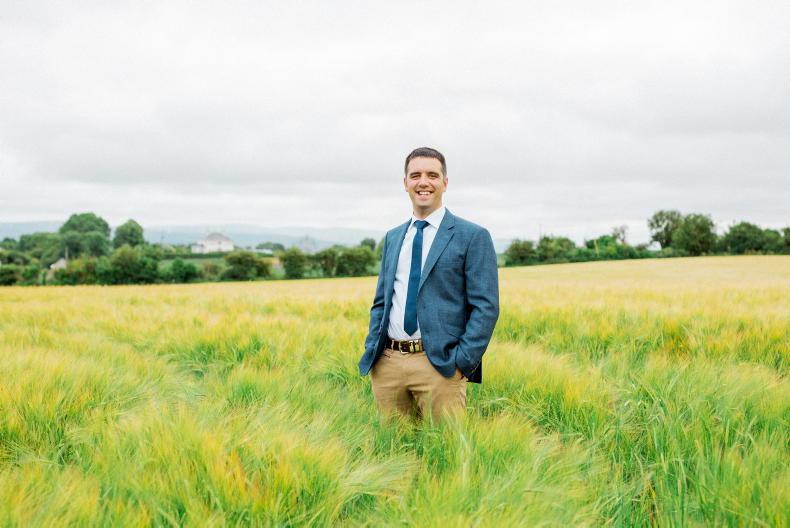
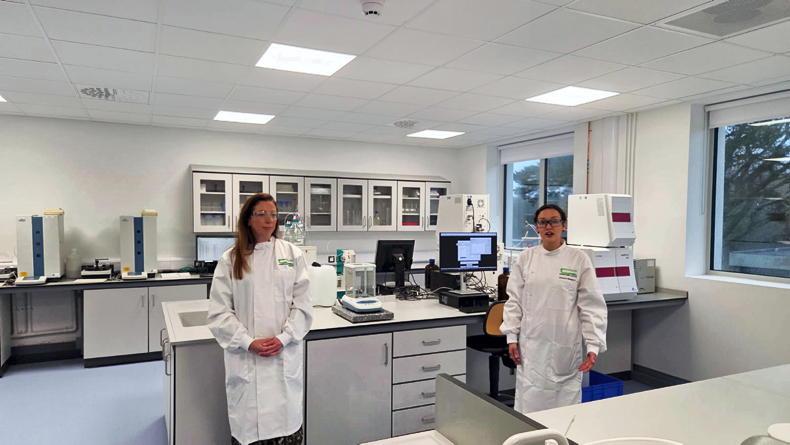

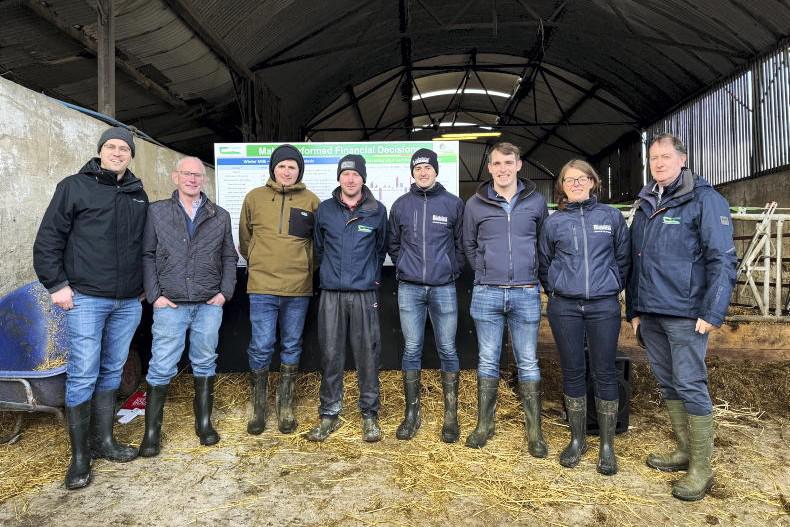
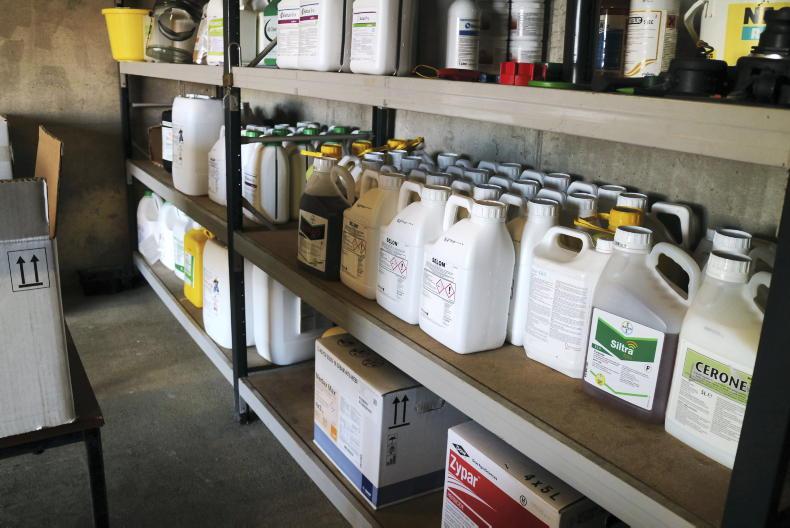
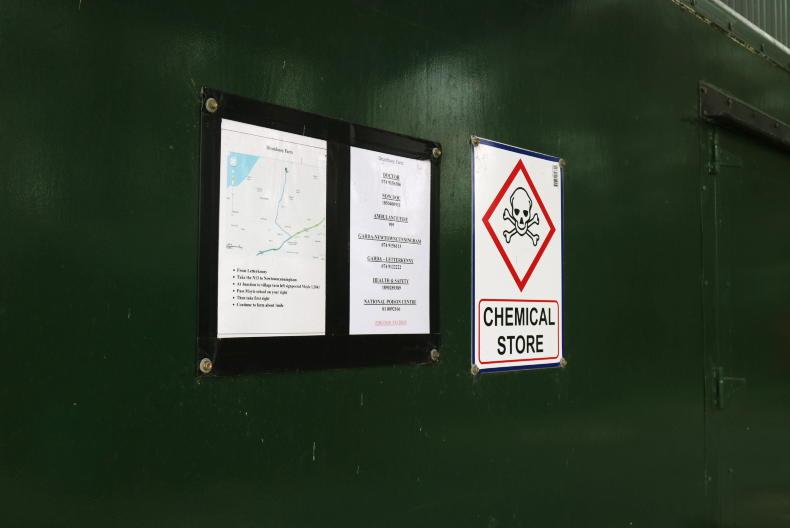
SHARING OPTIONS